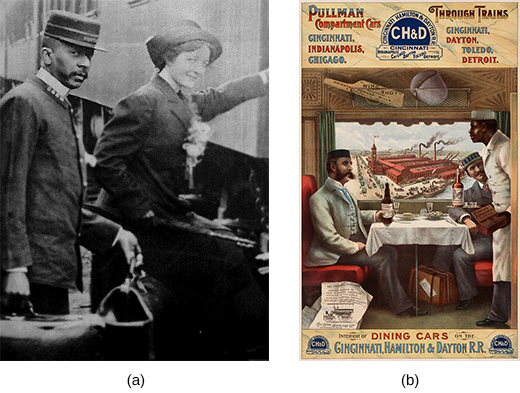| << Chapter < Page | Chapter >> Page > |

However, such economic gains were offset by the higher cost of living in the North, especially in terms of rent, food costs, and other essentials. As a result, African Americans often found themselves living in overcrowded, unsanitary conditions, much like the tenement slums in which European immigrants lived in the cities. For newly arrived African Americans, even those who sought out the cities for the opportunities they provided, life in these urban centers was exceedingly difficult. They quickly learned that racial discrimination did not end at the Mason-Dixon Line, but continued to flourish in the North as well as the South. European immigrants, also seeking a better life in the cities of the United States, resented the arrival of the African Americans, whom they feared would compete for the same jobs or offer to work at lower wages. Landlords frequently discriminated against them; their rapid influx into the cities created severe housing shortages and even more overcrowded tenements. Homeowners in traditionally white neighborhoods later entered into covenants in which they agreed not to sell to African American buyers; they also often fled neighborhoods into which African Americans had gained successful entry. In addition, some bankers practiced mortgage discrimination, later known as “redlining,” in order to deny home loans to qualified buyers. Such pervasive discrimination led to a concentration of African Americans in some of the worst slum areas of most major metropolitan cities, a problem that remained ongoing throughout most of the twentieth century.
So why move to the North, given that the economic challenges they faced were similar to those that African Americans encountered in the South? The answer lies in noneconomic gains. Greater educational opportunities and more expansive personal freedoms mattered greatly to the African Americans who made the trek northward during the Great Migration. State legislatures and local school districts allocated more funds for the education of both blacks and whites in the North, and also enforced compulsory school attendance laws more rigorously. Similarly, unlike the South where a simple gesture (or lack of a deferential one) could result in physical harm to the African American who committed it, life in larger, crowded northern urban centers permitted a degree of anonymity—and with it, personal freedom—that enabled African Americans to move, work, and speak without deferring to every white person with whom they crossed paths. Psychologically, these gains more than offset the continued economic challenges that black migrants faced.
Immigrants also shifted the demographics of the rapidly growing cities. Although immigration had always been a force of change in the United States, it took on a new character in the late nineteenth century. Beginning in the 1880s, the arrival of immigrants from mostly southern and eastern European countries rapidly increased while the flow from northern and western Europe remained relatively constant ( [link] ).

Notification Switch
Would you like to follow the 'U.s. history' conversation and receive update notifications?